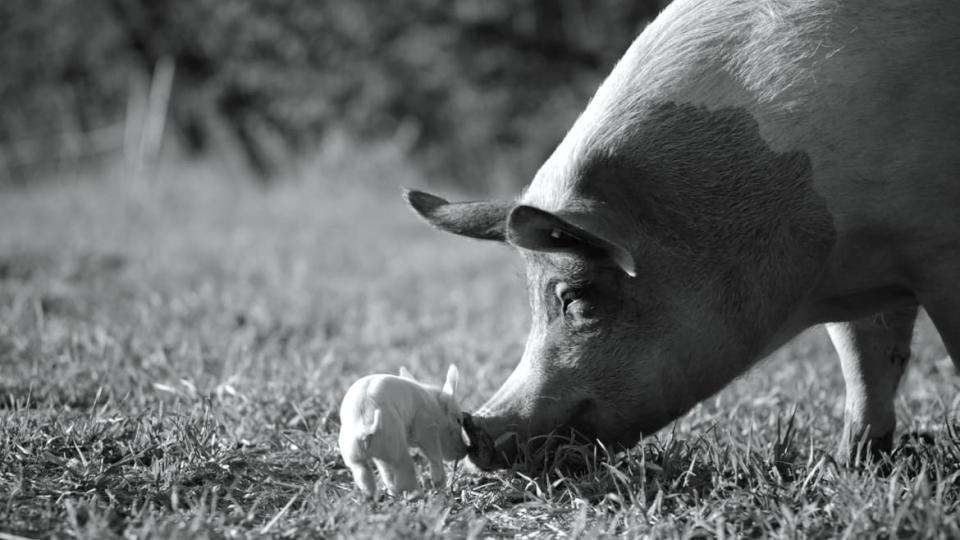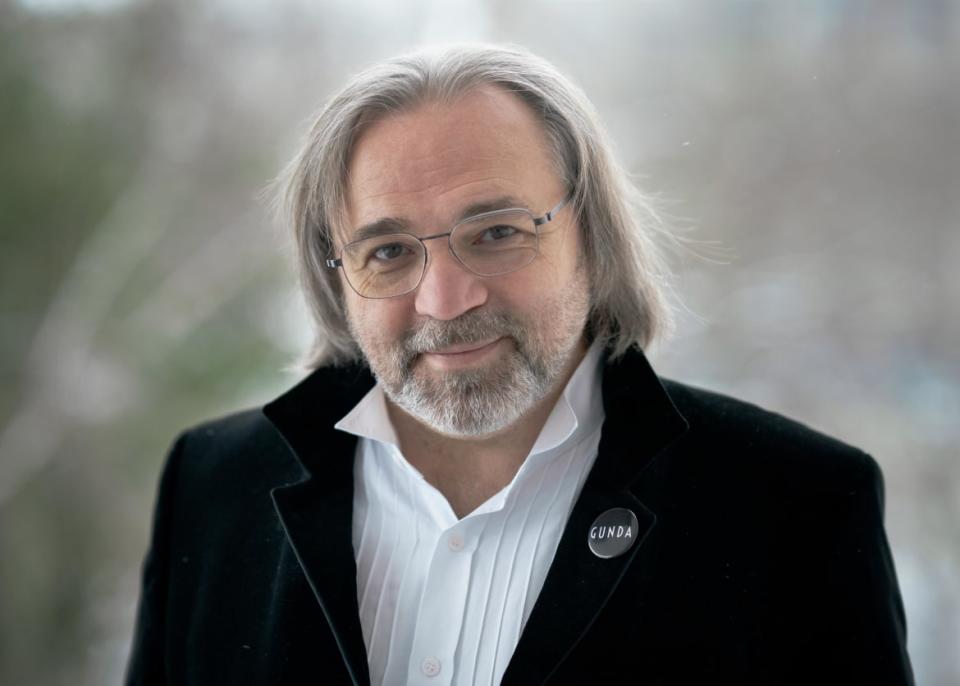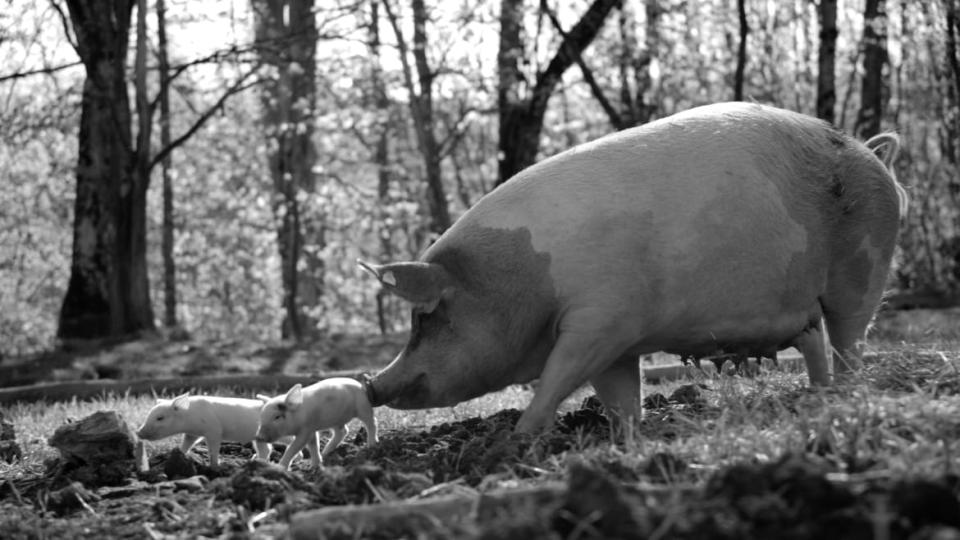Joaquin Phoenix Really Wants You to Watch This Documentary About a Lovable Pig

Lifelong vegetarian Viktor Kossakovsky has harbored a sincere curiosity with all living beings in his proximity. The established Russian documentarian fondly remembers a childhood outdoors in touch with local fauna.
“I started to take photos of animals in the forest when I was a kid: birds, dogs, cats, flies, and even ants,” he tells The Daily Beast via videocall from his home in Berlin.
For the last 30 years, since his career as a non-fiction storyteller began, Kossakovsky had dreamed of making a film starring animals. But convincing a producer of the precise mode of execution he envisioned had always turned into a dead end.
The tide finally turned for him when he partnered with Norwegian producer Anita Rehoff Larsen. “She was the only one who trusted me,” he notes
Rehoff Larsen acted as the much-needed catalyst to bring to life the director’s profound empathy for the other creatures we share the planet with in Gunda, his latest acclaimed project, which made the Oscar shortlist for Best Documentary this year.

Viktor Kossakovsky
Dazzling in its powerful simplicity and purely cinematic approach, this black-and-white fable takes its name from the female pig at its center that has just given birth to her brood. Kossakovsky takes a purely observational route featuring no voiceover, no guiding text, nor the presence of any humans.
“Society was not ready for this movie before,” he says, referring to how the mentality has changed around how we think about food in relation to animals. When Kossakovsky moved to his current neighborhood in the German capital five years ago, there was only one place where he could get non-meat dishes. Today, there is a handful of vegetarian restaurants near his place.
There’s been a drastic change in the collective consciousness, he believes. “People everywhere are starting to understand that we are doing something wrong. People are ready to face that animals have personalities and have the right to be here.”
The Epic Love Story Between a Man and an Octopus
Gunda is the third installment in a triptych on nature. ¡Vivan las Antipodas! (2011) about the contrast between antipodes, places that are geographically opposite to one another, and Aquarela (2018), a visual ode to the breathtaking force of water, complete it.
Originally, Rehoff Larsen had come on board to collaborate with Kossakovsky on a comedy documentary for children about three young magicians, but issues within their family and beyond the filmmakers’ control derailed their plans.
“I said to the producer, ‘OK, we got a little money for the preparation of that film. Why don’t we change it and instead make another movie for kids, but about chickens, pigs and cows?” At that point, the duo also brought on seasoned American producer Joslyn Barnes.
Although they were willing to go the distance, the producers didn’t exactly understand Kossakovsky’s concept. “It was difficult for me to explain how I could film something without voiceover or without humans. I said, ‘If I cannot express it in words, maybe I will show you.’”
The team allocated four months to find the right animals and scout for farms, but that time frame quickly vanished. As soon as they arrived at the first farm in Norway to look at pigs, one of them approached Kossakovsky with gentle eyes and became his leading lady.
“She looked at me so friendly, so unusual. I said, ‘Wow, this is our Meryl Streep. We don’t need to search anymore. Then I asked the owner of the farm, ‘Who is this one?’ And she said, ‘Ah, that’s our Gunda. She’s very friendly.’ It was just magic. Gunda just came to me. She chose me. We were laughing at the idea that perhaps she smelled that I’ve been a vegetarian my whole life.”
Kossakovsky’s initial structure for the film would include three 30-minute segments (for a 90-minute runtime), with each zeroing in on a different farm animal. But after they shot Gunda it became evident she would be the main protagonist with over an hour onscreen.
For the rest of the film, he thought of traveling to Latin America to film chickens and to India to capture footage of cows. Ultimately, since these chapters would only appear as dreamlike transitions to mark the passage of time and growth of Gunda’s piglets, they chose to find them at European sanctuaries: the cows hail from the U.K. and Spain and the chickens are from the U.K.
“In sanctuaries animals are calm. They are not afraid of humans. They know humans are not dangerous. They are older. For example, one of the cows in the film was almost 30 years old,” he explains. According to Kossakovsky, this is a rare sight of an elderly cow given that they normally are killed at four or five when they stop producing enough milk.
As for the chickens, one of which only has one leg, none of them had ever experienced freedom before what we see in Gunda.
“They had never seen skies or touched grass before. This is why they were not afraid of our camera, because they never knew cameras existed before. They came out from the cage for the first time in front of our eyes and they saw everything. The camera is just part of this new world around them,” he says.
From the onset, Kossakovsky and his cinematographer Egil Håskjold Larsen decided to keep the camera at the animals’ eye level. For example, when the piglets were born, they chose to dig in the ground in order to place the dolly at surface level with the lens nearly touching the ground, so that if the pigs approached it would feel like we were eye to eye with the animals. “We focused on their personality and we saw them as they are,” he offers.
Out of respect for his subjects, just as he would if they were fellow humans, Kossakovsky spent plenty of time around Gunda. By the time her young were born, she wasn’t afraid of anyone on the team and had accepted them as friends.
“If I was making a film about you, I cannot just interview you. I have to dedicate my time to you. I have to spend part of my life getting to know you. This was my approach. I said to my producer, ‘We cannot come for two or three hours, or even for two days, no, we have to spend at least two months together with Gunda in order to understand her life,’” he says. “This is why we were coming every morning at four o’clock before she wakes up and we were leaving the farm after she goes to sleep. Every day we came before sunrise and left after sunset.”
Over the course of filming, everyone in the crew had a change of heart about their diet. When the group would go out for evening dinners, one by one, each member began asking for vegetarian options at the restaurant. Some of them took their newfound conviction a step further and became vegan.
“This was very beautiful. If you see how beautiful, clever, sensitive animals are, if you see how they suffer, if you see how they experience freedom, how they experience friendship, if you see how they help each other, if you see all of this, you cannot just say, ‘I didn’t see it.’ No, you saw it and you will never forget it. You cannot eat them because you saw they’re not something, they are someone. Each of them is someone,” maintains Kossakovsky.

Despite dedicating so much time to developing his bond with Gunda, the director only shot about six hours of footage. This shockingly minimalistic approach is thanks to his time making films with minimal resources in Russia and his commitment to using as few animal products as possible.
“I am an old-school filmmaker. I used to film in 35mm stock and in Russia there was never enough film stock. But also, when I started making movies, I realized the contradiction of my life was the fact that the film stock itself was made from the bones of animals. This is why I never filmed a lot. I always felt guilty. That’s why I educate myself to film only when I definitely know I have to press this button,” he notes.
Kossakovsky is also a fervent believer that animals, humans included, are natural-born film viewers because we spend a great part of our lives reading the emotions of others. He believes our instincts help us understand the emotional context of a situation; therefore, he can’t understand why many documentaries feel compelled to use voiceover or rely on a musical score.
“In Russia, we have this expression in [the] cinema world that the best film is a film without music. But almost no one achieves it because we love to push the viewer’s emotions. We want to make them cry. I was very close to making a movie without music a few times,” he recalls. “But before I wasn’t strong enough to make it, but this time I said, ‘No, I cannot spoil my film because it will have a different value if I use music. If I have to use voiceover, it means I don’t trust the audience because I would be giving them information they don’t need. You need to see, and you need to feel. You don’t need to know anything.”
The magic of this is clearest in the movie’s final sequence—a devastating, uninterrupted 15-minute shot that will elicit tears, and serves as a desperate plea for the acknowledgment of other species’ right to exist. “We were all suffering. We were filming and crying, all of us, because it was obviously shocking that she was expressing her emotion in every single second, in every look. There’s never a dull moment,” he says.
These artistic principles stand in direct opposition to last year’s popular animal documentary My Octopus Teacher, which became a hit on Netflix and earned an Oscar nomination. That film follows director Craig Foster for a year as he obsesses over a cephalopod living off the South African coast. It heavily features his spoken observations and emotional projections. Kossakovsky found it a self-centered enterprise that’s more about the man than the invertebrate it claims to care for.

“If he had taken out his voiceover, it would be a much better film in my opinion. Without voiceover he would be equal to the octopus, but with voiceover he spoiled the film for me. I forced myself to watch it because I wanted to see the octopus’s behavior, but I found it very difficult to look at the story of his depression. This is a good example of people thinking about themselves too much,” he argues. “This is typical anthropocentrism and thinking everything is about us humans. Even when I talk about octopus, it’s really about me. This is typical. We live in the planet and everything is about humans. His movie would be a great one, if he would just take out his voiceover and make it less about himself.”
Though Gunda didn’t have a direct-to-streaming release (it’s in physical theaters and virtual cinemas starting this weekend), along the way it has garnered major supporters. Kossakovsky was very pleased that Neon, the American distributor behind Parasite, picked up his porcine tale. “I was a lucky boy, because in Europe we know how to make films, but we don’t know how to distribute them,” he says.
A bigger surprise came when renowned actor and militant vegan Joaquin Phoenix signed on as executive producer. As Kossakovsky’s friends and loved ones watched Phoenix accept the Best Actor Oscar for Joker in early 2020, they half-jokingly asked the documentarian if he had written his speech. On stage, Phoenix spoke intensely about animal rights, our disconnection with the natural world, and how we exploit other species.
“His speech at the Oscar ceremony was similar to what I was telling my team every day. This is why we found him and gave him our film to watch,” he says. “We were in the last stage of sound mixing and sound editing. He immediately called me and he said, ‘Finally, someone made a film about them, about animals, as they are and not as we see them.’”
Grateful, Kossakovsky believes that both Phoenix’s and Neon’s involvement has amplified interest not only in Gunda but in his entire filmography. “The support of Phoenix was so crucial for my own career because suddenly people are checking out my previous films. Suddenly people are saying, ‘Oh, we want to do a retrospective of your work,’” he says. Even famed director Paul Thomas Anderson, who is prominently quoted in the film’s trailer and promotional materials, fell under the spell of Gunda, calling it “pure cinema.”
As her story travels the world, Gunda herself remains safe and sound. The owner of the farm promised the filmmaker that she will not die in a slaughterhouse and will live out her days until she passes from old age. Kossakovsky wishes that were the fate of more farm animals. “Gunda is alive and we visit her quite often,” he says. Last month his cinematographer took a trip to see her at her Norwegian farmstead. The director, proud and moved, holds his cellphone up to his computer’s camera to show an endearing photo of Håskjold Larsen next to Gunda.
Moderately optimistic for a future with less meat eaters and more animal lovers, Kossakovsky has already felt Gunda’s impact on those who’ve seen it so far, and he hopes this awareness grows. “I’ve received so many letters from young people saying they cannot imagine eating meat anymore,” he says. “This is a big deal. I hope it will work.”
Get our top stories in your inbox every day. Sign up now!
Daily Beast Membership: Beast Inside goes deeper on the stories that matter to you. Learn more.

 Yahoo Finance
Yahoo Finance 